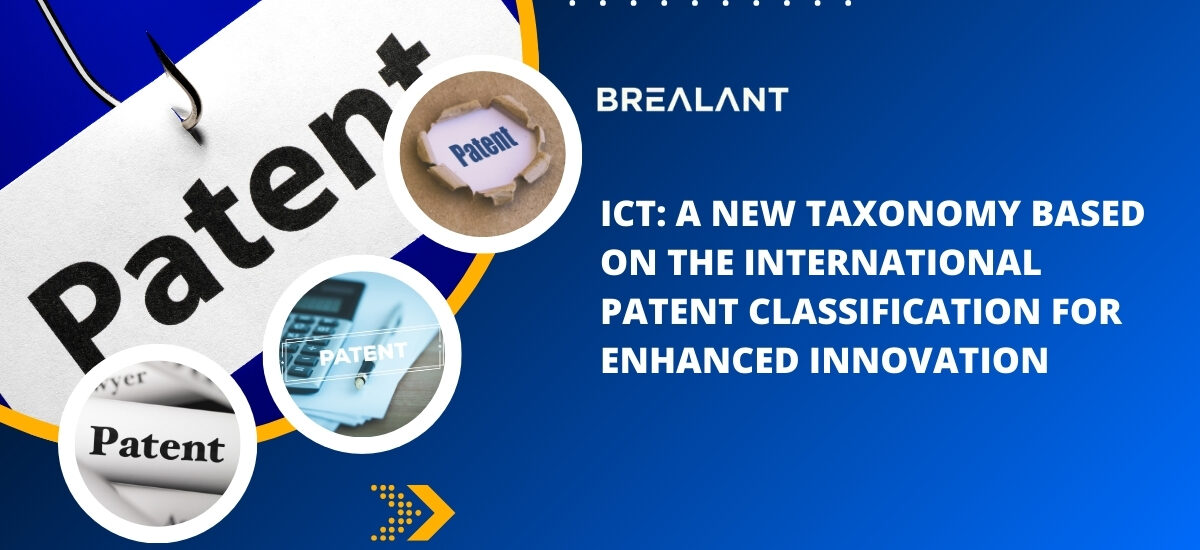



An essential component of global innovation, information and communication technology (ICT) has transformed sectors, spurred economic expansion, and changed how people engage with the outside world. The need for a systematic framework to categorize and oversee technological advances is growing as their rate of development quickens. To meet this demand, the International Patent Classification (IPC) provides a strong taxonomy system that promotes innovation and systematic methods for cataloguing ICT-related patents.
Globally, patents are categorised using the IPC, a hierarchical system based on technical characteristics. The World Intellectual Property Organisation (WIPO), offers a uniform framework that makes searching and analysing patent data easier. The IPC’s eight main sections, subdivided into classes, subclasses, groups, and subgroups, include more than 70,000 categorisation codes. This complex framework guarantees accurate classification of breakthroughs, allowing interested parties to recognise technical patterns, evaluate competitive environments, and uncover unexplored prospects.
But even while the IPC has been useful in categorising patents in a variety of fields, the quick development of ICT presents particular difficulties. The dynamic and multidisciplinary character of ICT developments sometimes outpaces traditional classification schemes, leading to a fragmented knowledge of the area. These issues can be resolved and a more logical framework is offered by a new taxonomy designed specifically for ICT and based on the IPC.
ICT includes technologies like artificial intelligence, blockchain, cloud computing, cybersecurity, and the Internet of Things (IoT), which is distinguished by its broad reach and quick development. These technologies’ interconnection frequently results in overlapping developments that are difficult to classify. An updated ICT taxonomy would:
∙Improve Clarity: A new taxonomy can lessen uncertainty and promote a better comprehension of the area by clearly defining the borders and connections between different ICT domains.
∙Encourage Innovation: A systematic classification system can facilitate focused research and development initiatives by assisting innovators in recognising new trends and market gaps.
∙Encourage Collaboration: A new taxonomy can encourage cooperation and information exchange by offering a common language to stakeholders across industries, academia, and government.
∙Promote Policymaking: Using an improved ICT taxonomy, policymakers may create more efficient rules, rewards, and financing schemes corresponding to technology goals.
Modern ICT advancements and conventional patent classifications would be combined in a new ICT taxonomy based on the IPC. The following levels might be used to organise it:
∙Core Technologies: This category comprises the fundamental ICT elements, such as network infrastructure, software, and hardware. Microprocessors, operating systems, and telecommunications networks are a few examples.
∙Enabling Technologies: These technologies make creating and implementing ICT solutions easier. A few examples of these technologies are distributed ledger systems, data analytics tools, and machine learning algorithms.
∙Applications: ICT advancements would be grouped in this tier according to the industries in which they are used. Fintech platforms, smart manufacturing systems, e-health solutions, and driverless cars are a few examples.
∙Cross-cutting topics: These topics include broad ICT potential and problems, such as digital ethics, privacy, and cybersecurity. Sustainability and energy efficiency would also be taken into account at this level.
∙Emerging Trends: This tier would concentrate on cutting-edge ideas and technologies including 6G networks, edge AI, and quantum computing in order to take into consideration the dynamic nature of ICT.
Many benefits are available to different stakeholders with an IPC-based ICT taxonomy:
∙For Innovators: By recognising previous art, avoiding duplication, and spotting uncharted territory, innovators may more successfully traverse the patent environment with the help of the taxonomy.
∙For Researchers: The taxonomy may be used by academics and research organisations to map the development of ICT technologies, monitor trends in innovation, and spot possibilities for interdisciplinary study.
∙For Businesses: By gaining knowledge about industry trends, rivalry, and possible collaborations, businesses may allocate resources and make strategic decisions.
∙For Policymakers: To keep their economies competitive in the digital age, governments may utilise the taxonomy to match their national innovation policies with international trends.
Despite the obvious advantages of an IPC-based ICT taxonomy, there are many obstacles to its development:
∙ICT’s dynamic nature necessitates a structure that is both flexible and adaptable, as the taxonomy must be updated frequently due to the quick speed of technological advancement.
∙Multidisciplinary Overlaps: Attempts to classify are made more difficult by the many intersections of ICT discoveries with other disciplines, such as materials science and biology.
∙International Consensus: Cooperation amongst various stakeholders with different interests is necessary to reach an international consensus on the taxonomy’s structure and content.
∙Data management: In order to implement the taxonomy, enormous volumes of patent data must be processed, which calls for reliable analytical tools and procedures.
Offering a dynamic and organized framework may enable stakeholders to promote technology advancement, handle global issues, and negotiate the complexity of ICT. The future is being shaped by ICT, and a well-designed taxonomy will be essential to maximising its potential. Make the most of the international patent classification opportunities and stay ahead of the competitors with Brealant’s tech-led solutions for all your intellectual property-related queries.